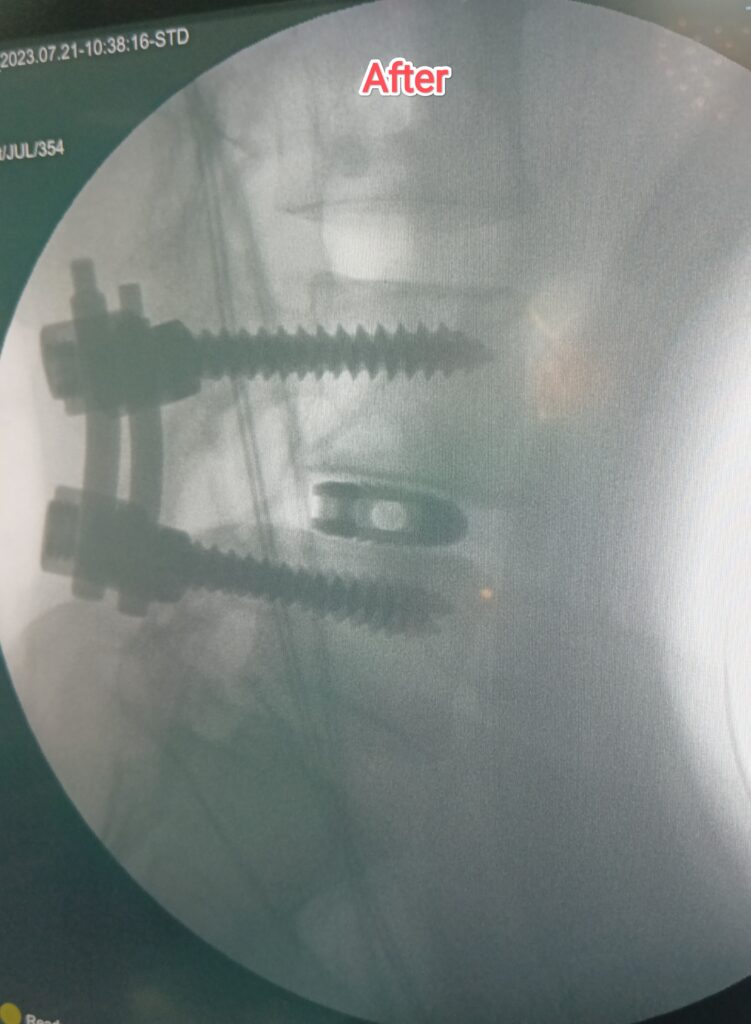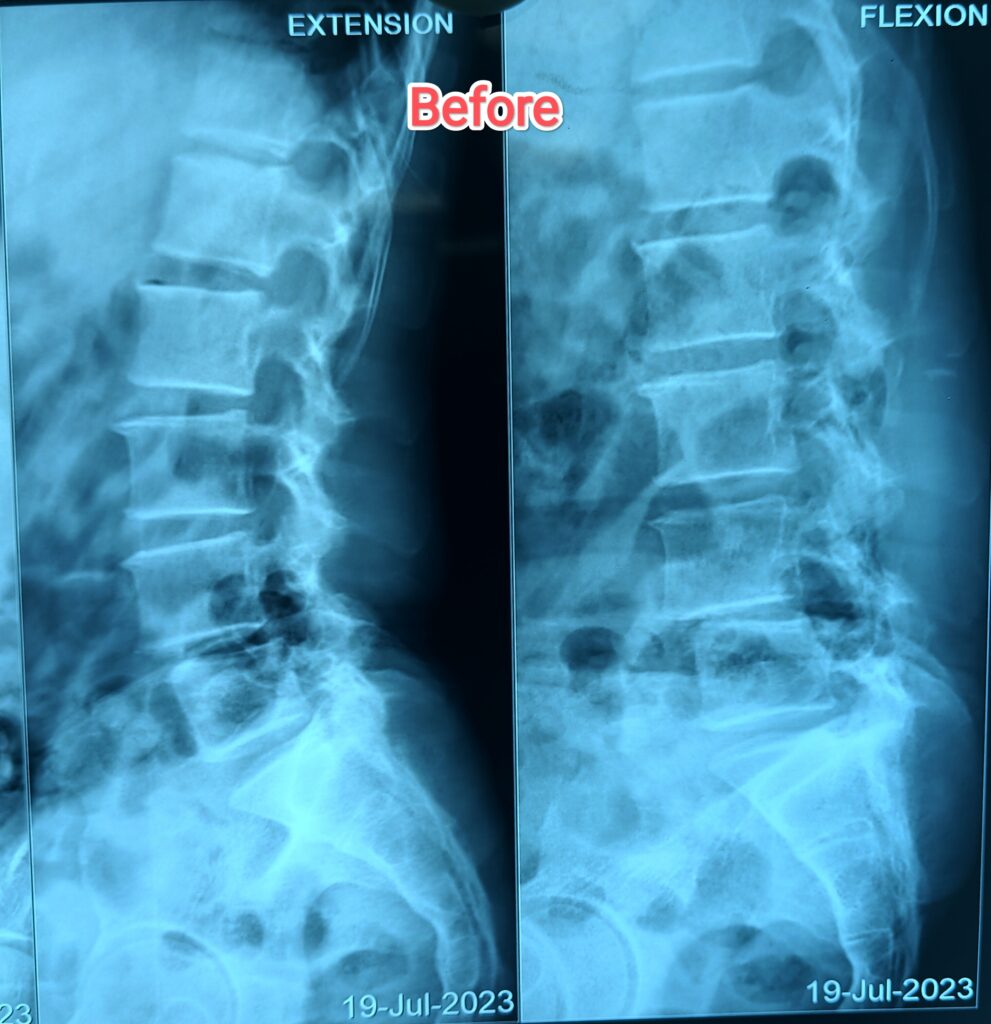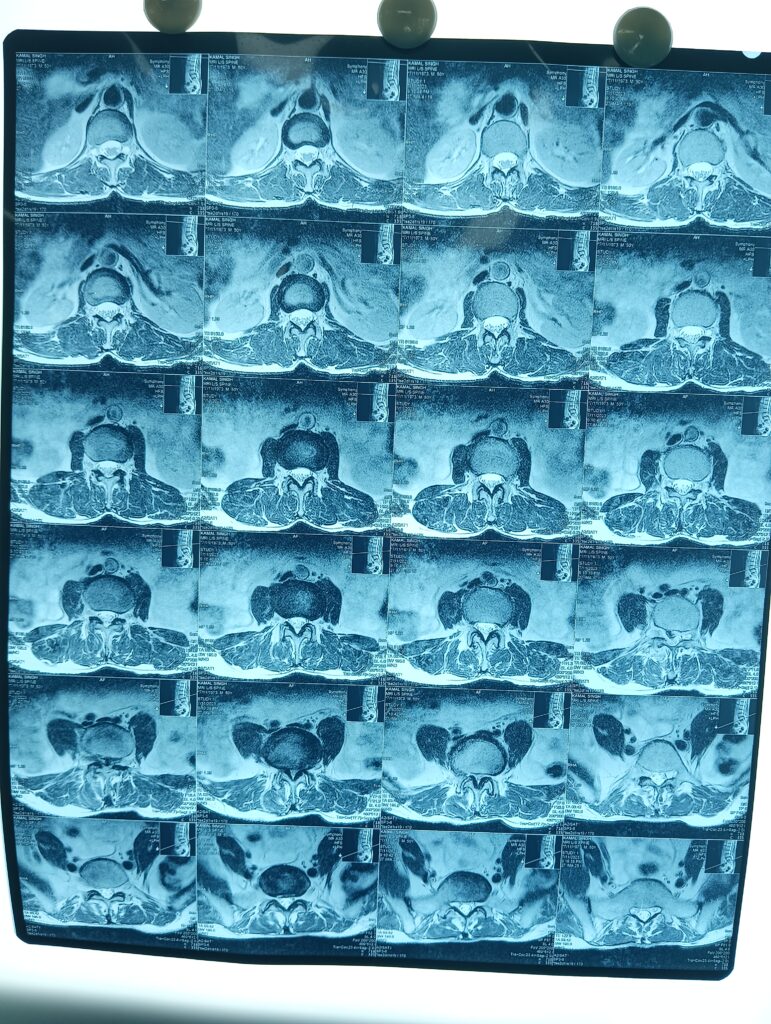Introduction
Back pain and spinal disorders can significantly impact one’s quality of life, limiting mobility and causing discomfort. In cases where conservative treatments fail to provide relief, surgical interventions like Transforaminal Lumbar Interbody Fusion (TLIF) can be a transformative solution. In the bustling city of Indore, patients are finding hope and relief through the skilled hands of Dr. Sandeep Moolchandani at Samarth Neuro and Spine Centre. This blog post explores the significance of TLIF surgery, the expertise of Dr. Sandeep Moolchandani, and the comprehensive care provided at Samarth Neuro and Spine Centre.
Understanding TLIF Surgery
Transforaminal Lumbar Interbody Fusion (TLIF) is a surgical procedure used to treat a variety of spinal conditions, including degenerative disc disease, herniated discs, spondylolisthesis, and spinal stenosis. The procedure involves accessing the spine through an incision in the lower back, removing the damaged disc, inserting a bone graft, and often placing screws and rods to stabilize the spine while the bones fuse together over time. TLIF surgery is known for its effectiveness in reducing pain, stabilizing the spine, and improving overall function and quality of life.
Meet the Expert: Dr. Sandeep Moolchandani
At the forefront of TLIF surgery in Indore is the highly skilled and experienced Dr. Sandeep Moolchandani. With a remarkable track record and a commitment to patient-centric care, Dr. Moolchandani has earned a reputation as a leading spine surgeon in the region. His extensive training and specialization in neurosurgery and spine surgery make him a trusted choice for patients seeking relief from spinal disorders.
Patient-Centric Care and Success Stories
One of the hallmarks of Dr. Moolchandani’s practice and Samarth Neuro and Spine Centre is their patient-centric approach. Patients’ well-being and comfort are top priorities, and this is reflected in the success stories that emerge from the centre. Many patients who have undergone TLIF surgery at Samarth Neuro and Spine Centre have reported significant improvements in their quality of life, reduced pain, and restored mobility. Below is one such example:
This patient had Severe low back pain from the past 2 years and neural claudication from the past 1.5 years. He was unable to walk for more than 50 metres after which he would develop severe numbness in both legs and would even fall (Neural Claudication). Neural Claudication is the pain, weakness, or numbness in the legs caused by compression of the spinal nerves. It typically occurs during walking or standing and improves when the person sits or bends forward. He had also started developing difficulty in passing urine due compression of nerves. He had a Lumbar disc prolapse, constricted spinal canal (Kn as Lumbar Canal Stenosis) and his L4 vertebra was slipping away from his L5 vertebra creating instability in his spine (known as Spondylolisthesis). This was successfully managed with Open TLIF procedure.




Dr. Moolchandani’s Approach
Dr. Moolchandani’s approach to TLIF surgery encompasses both surgical precision and compassionate patient care. He begins with a thorough evaluation of each patient’s condition, taking into account their medical history, symptoms, and diagnostic results. This personalized approach allows him to tailor the surgical plan to the unique needs of each individual.
Open Transforaminal Lumbar Interbody Fusion (TLIF) is a surgical procedure used to treat certain conditions of the lumbar spine, such as degenerative disc disease, spondylolisthesis, and spinal stenosis. Below are the general steps involved in the Open TLIF surgery:
- Preoperative preparation: Before the surgery, the patient will und ergo a thorough evaluation, including imaging studies like X-rays, MRI, or CT scans, to assess the specific condition of their spine. The surgeon will discuss the procedure, potential risks, and benefits with the patient, and obtain informed consent.
- Anesthesia: The patient is given general anesthesia to ensure they are unconscious and pain-free during the operation.
- Incision: The surgeon makes an incision in the lower back, usually over the affected disc level. The size and location of the incision may vary depending on the patient’s condition and the surgeon’s preference.
- Exposure: The surgeon gently moves aside the muscles and soft tissues to access the affected area of the spine. Retractors are used to hold the muscles and other structures away from the surgical site.
- Discectomy: The surgeon removes the damaged or herniated disc material to relieve pressure on the spinal nerves and the spinal cord. This decompression helps alleviate pain and other neurological symptoms.
- Interbody fusion: A bone graft or a cage (made of metal or a combination of metal and synthetic material) is placed into the now empty disc space. This promotes fusion between adjacent vertebrae, stabilizing the spine. The bone graft may be harvested from the patient’s hip (autograft) or obtained from a bone bank (allograft). Sometimes, additional substances such as bone morphogenetic protein (BMP) may be used to enhance bone fusion.
- Pedicle screw fixation: The surgeon places pedicle screws into the vertebrae above and below the interbody graft. These screws provide stability and help hold the vertebrae in the correct position during the fusion process.
- Rod insertion: A metal rod is then connected to the pedicle screws, connecting the screws and providing further stability to the spine.
- Bone graft placement: Additional bone graft material may be placed along the sides of the vertebrae to encourage fusion.
- Closure: The surgeon carefully closes the incision using sutures or staples. Sterile dressings are applied to the wound.
- Postoperative care: The patient is taken to the recovery room, closely monitored, and eventually transferred to a regular hospital room. They will be encouraged to start moving and walking within a day or two to aid in the healing process and prevent complications.
Samarth Neuro and Spine Centre: A Haven of Comprehensive Care
Samarth Neuro and Spine Centre, where Dr. Sandeep Moolchandani practices, is a state-of-the-art facility equipped with cutting-edge technology to provide the highest level of care to patients. The centre’s multidisciplinary team includes neurosurgeons, orthopedic surgeons, physiotherapists, and pain management specialists, ensuring comprehensive care at every stage of the treatment journey.
Conclusion
Transforaminal Lumbar Interbody Fusion (TLIF) surgery is a transformative solution for individuals suffering from debilitating spinal conditions. In Indore, Dr. Sandeep Moolchandani at Samarth Neuro and Spine Centre stands as a beacon of hope, utilizing his expertise and the centre’s advanced resources to provide top-notch care to patients seeking relief from spinal disorders. With a commitment to surgical excellence and patient well-being, Dr. Moolchandani and his team are playing a vital role in restoring lives and bringing back the joys of an active, pain-free existence.
You can visit Dr Sandeep Moolchandani (Consultant Brain and Spine Surgeon) who is well known for successful back pain treatment in Indore.
Call and Book Appointment today for Back Pain treatment in Indore.
Read More: